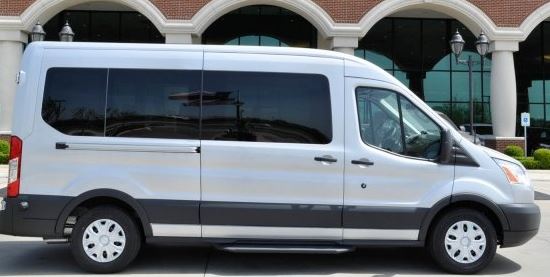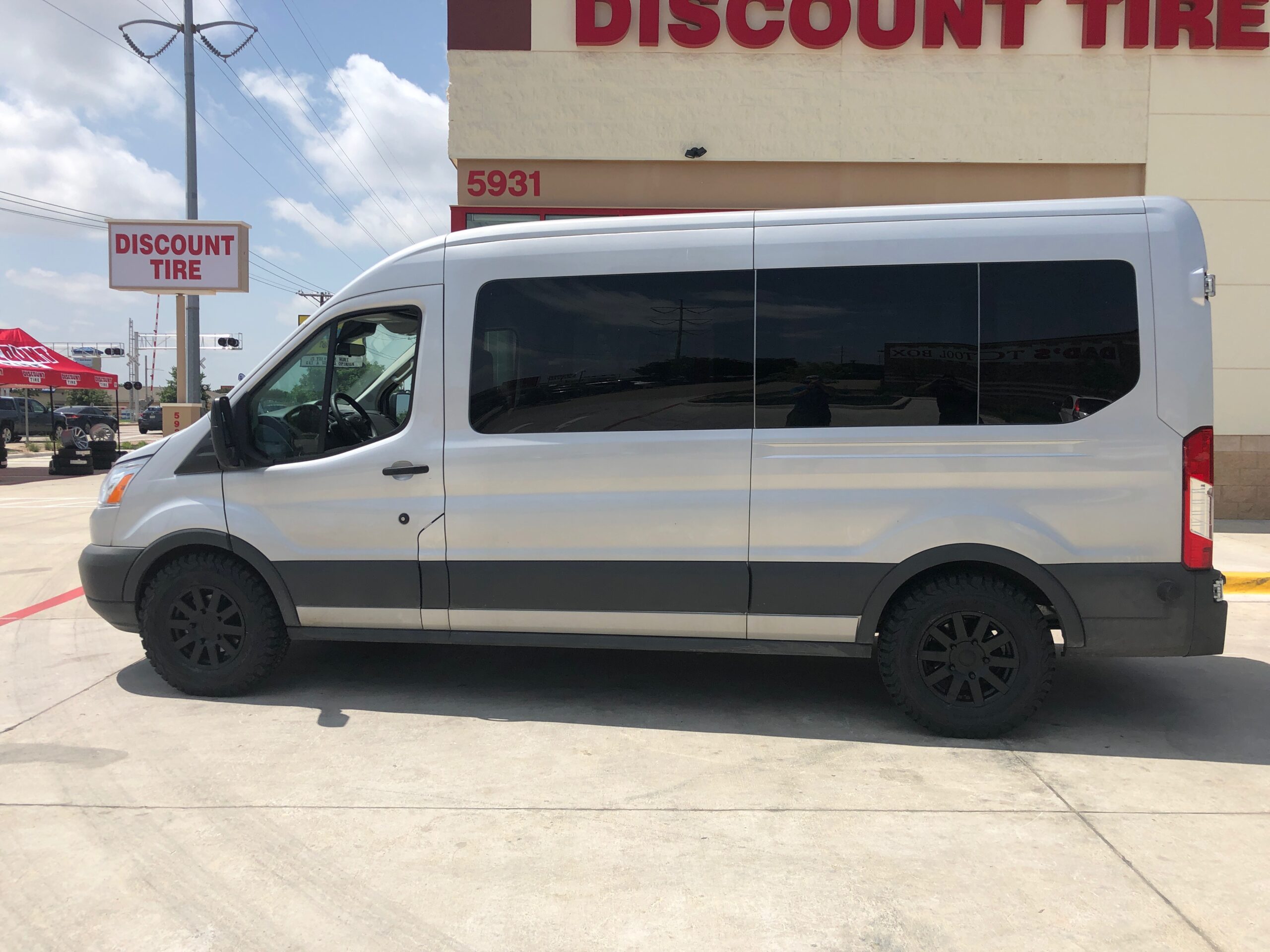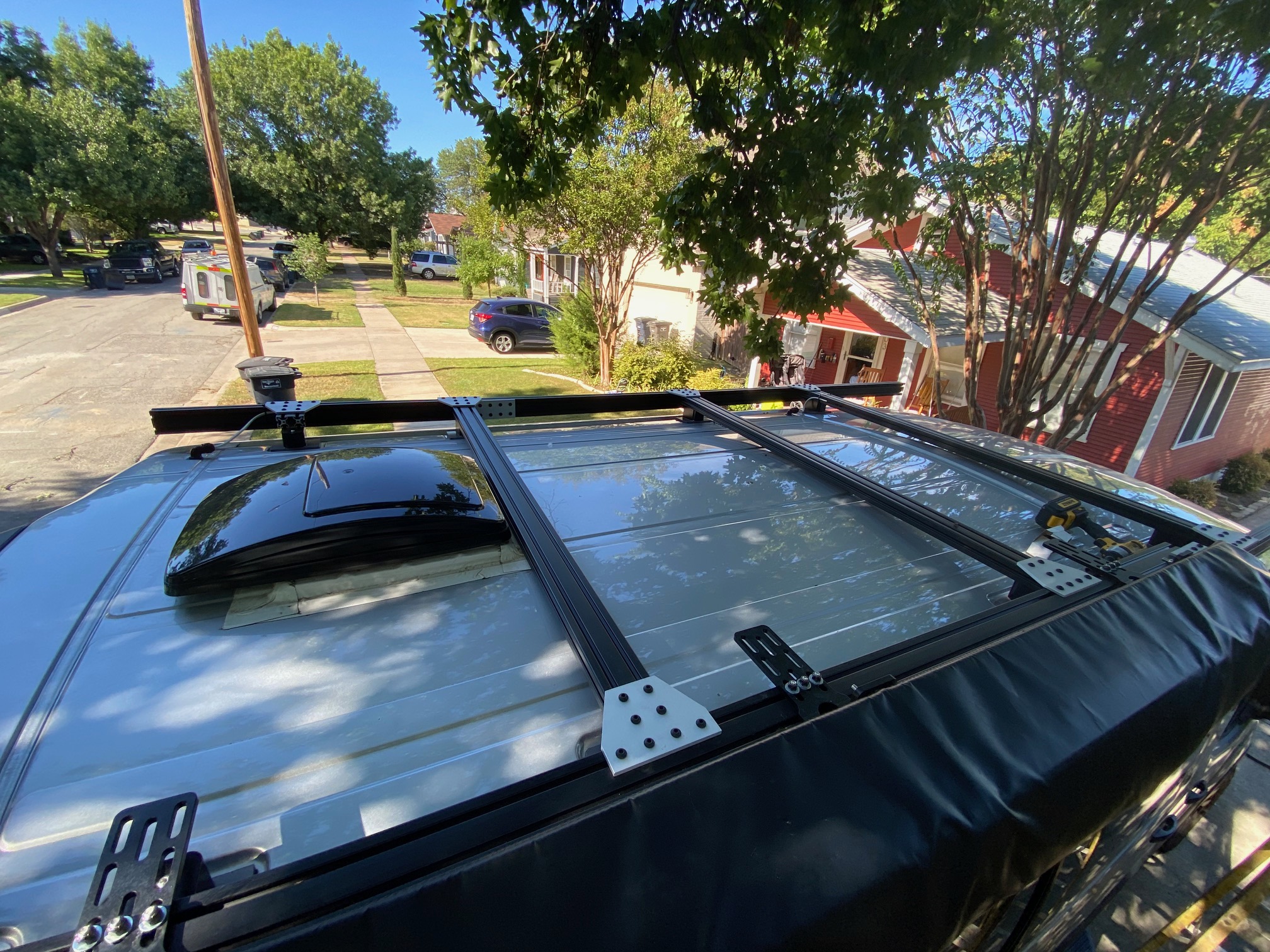MPG and Your Ford Transit
Comparing larger tires and fuel economy
One of the largest questions when upgrading from a smaller car, truck, SUV to the behemoth on wheels we refer to as the Mega Van is what miles per gallon are you getting. This question becomes even more prevalent when you go to larger tires, add roof racks, solar panels, heavy build outs etc. etc. While mine is in no way a sweeping overview of every Ford Transit I can present my numbers as tracked and the differences it has made.
My van is a 2018 Ford Transit 350 XLT 15 Medium Roof passenger wagon which started stock, brand new, from the dealer. It remained as a stock van, or mostly stock van for the first 9,000 miles of its life. At about mile 8,500 I was stuck in the damp grass at an event in overflow parking and decided it was time to upgrade tires.
The average of my miles per gallon (mpg) to this point, the first 7 months, is 14.34 mpg for 6,550 miles. This number was adjusted to exclude towing and only 87 octane. As a daily driver it mostly encounters the same stretch of road with similar conditions. I usually run 87 octane unless towing for long distances.


The stock tire size of a 2018 Ford Transit 350 XLT is 235/65r16, a popular upgrade size is 245/75r16. This is a wider tire (245mm v 235mm [9.25in v 9.65in]) and a taller tire (774mm v 712mm [28.03in v 30.47in]). It is not a direct replacement as the pinch weld in the wheel well must be trimmed or…ahem, moved out of the way. There are several write-ups or information on doing this pinch weld modification, mine was merely beat with a hammer on the lowest few inches to make room for the tire. I do not have rubbing with the exception of some decent potholes. I decided on the BFG K02 245/75r16 tires with Black Rhino Journey wheels (since discontinued). For a 2018 my wheel spacing was 5×160.
With the tires swapped, the van was mostly kept in the same configuration. Seats were removed and added, and replaced with a bed and mattress at times, however there were no other major aerodynamic differences. Using the same comparisons at 87 octane and excluding towing the average mpg is 13.95 mpg for 7,033 miles. As the larger tires constitute an 8.7% increase in size the odometer will not reflect accurate miles driven. I added 8.7% to the odometer readings to accurately reflect mileage. This results in a 2.7% decrease in fuel efficiency. For a more real life comparison if you drive 1,000 miles a month at an average of $3gal (as of writing in 2021 this is pretty close)
Stock tires 1,000 miles / 14.34 mpg = 69.74 gallons * $3 = $209.21
Larger Tires 1,000 miles / 13.95 mpg = 71.68 gallons * $3 = $215.05
At this small difference, it is most likely negligible and can be fixed by adjusting driving habits. The costs for larger tires is another story covered in another topic.
Up to this point the van has only undergone internal changes. At 20,000 miles a roof rack, maxxair fan, and awning were added. Roughly 80lb awning with another 80lbs of extrusion roof rack.
*The maxxair was added a few months prior to the roof rack, but there was not a significant amount of mileage driven to compare just the maxxairs affect on mpg. The 1,000 miles with just a maxxair and no roof rack did not change the average mpg.
This did have an affect on drag and ultimately mileage. Screening the data to remove towing and adjusting for the larger tires, the resulting average is 12.83mpg for 10,758 miles. This is an 8% reduction in fuel efficiency.

Larger Tires, no Roof Rack 1,000 miles / 13.95 mpg = 71.68 gallons * $3 = $215.05
Roof Rack 1,000 miles / 12.83 mpg = 71.68 gallons * $3 = $233.83
There was additional weight added during this time, however the results are pretty significant with just the roof rack. Over a 1mpg difference. In addition to the cost of the roof rack, you will be paying $20/mo for it just to be atop your Ford Transit. There are currently mixed reports from adding a fairing to the front of your rack and impact it has on MPG.
Summary
2018 Ford Transit 350 XLT 3.5L Ecoboost Mid Roof fuel economy
Data was adjusted by 8.7% from odometer once larger tires were on, and was sorted to only include 87 octane on tanks that did not include towing.
Stock
MPG 14.34
Average- 87 Octane
- Daily Drives
- 6,550 Miles
Upgraded TiresUpgraded
MPG 13.95
Average- 87 Octane
- Daily Drives
- 7,033 Miles
Added Roof Rack
MPG 12.83
Average- 87 Octane
- Daily Drives
- 10,758 Miles
